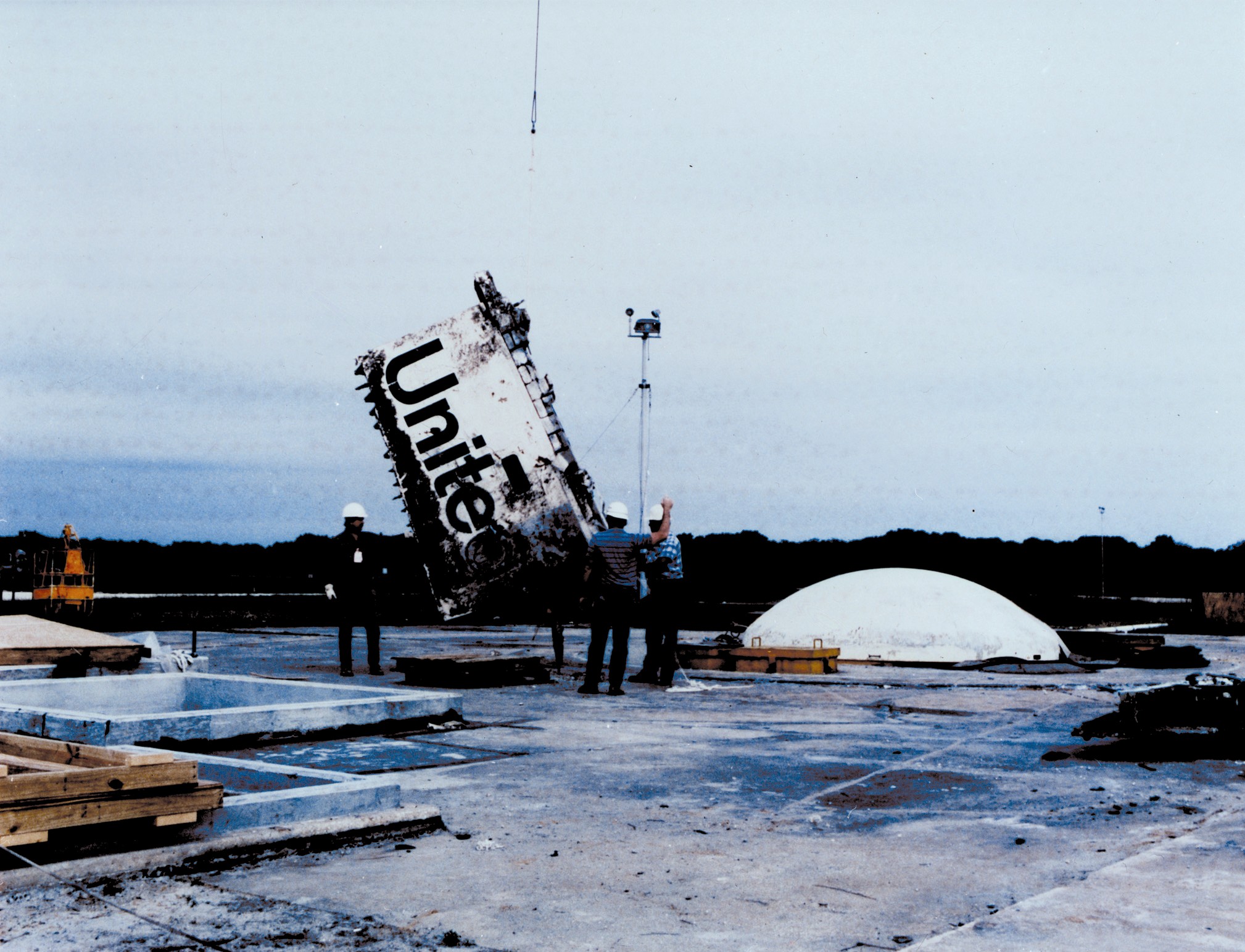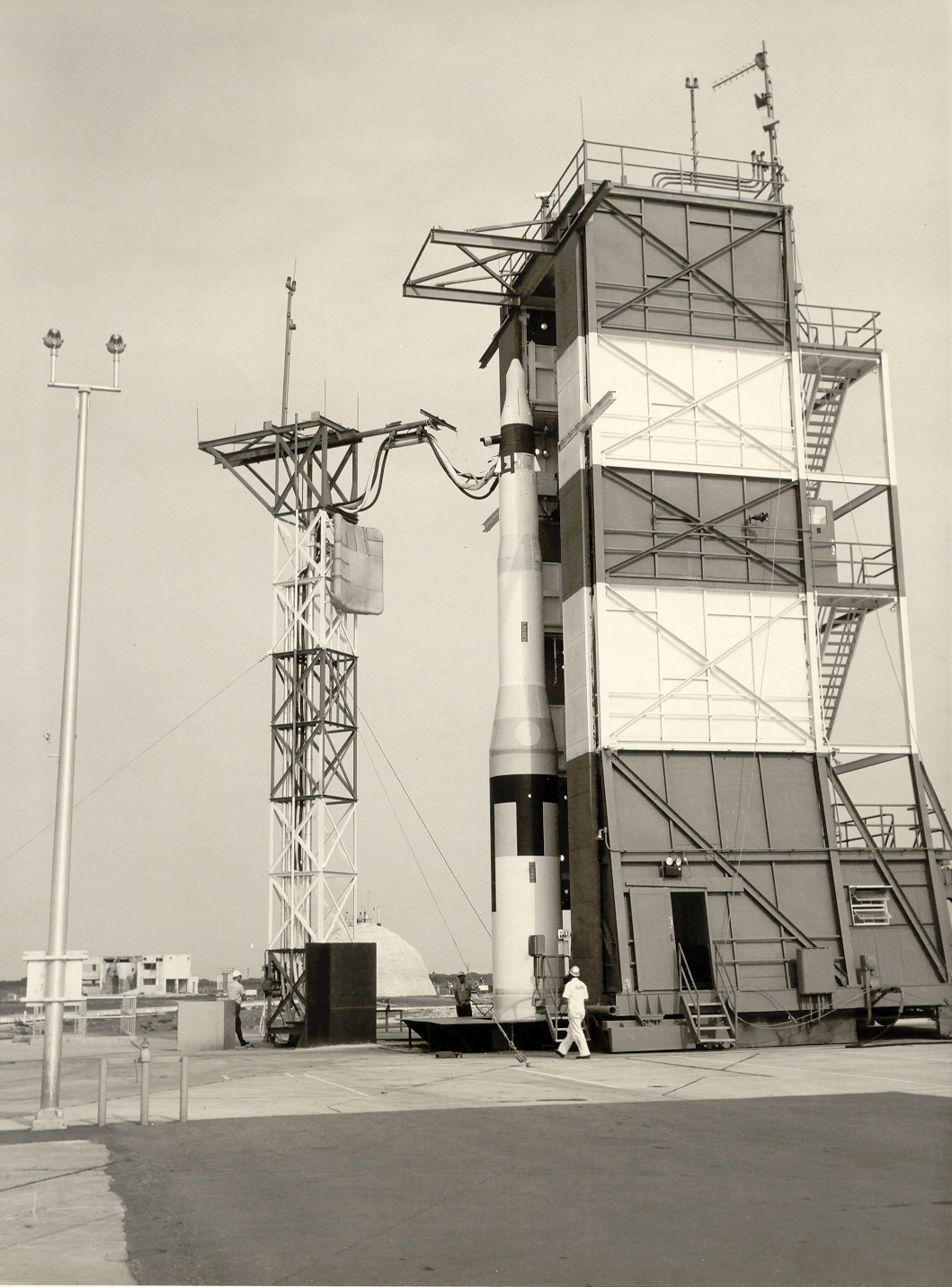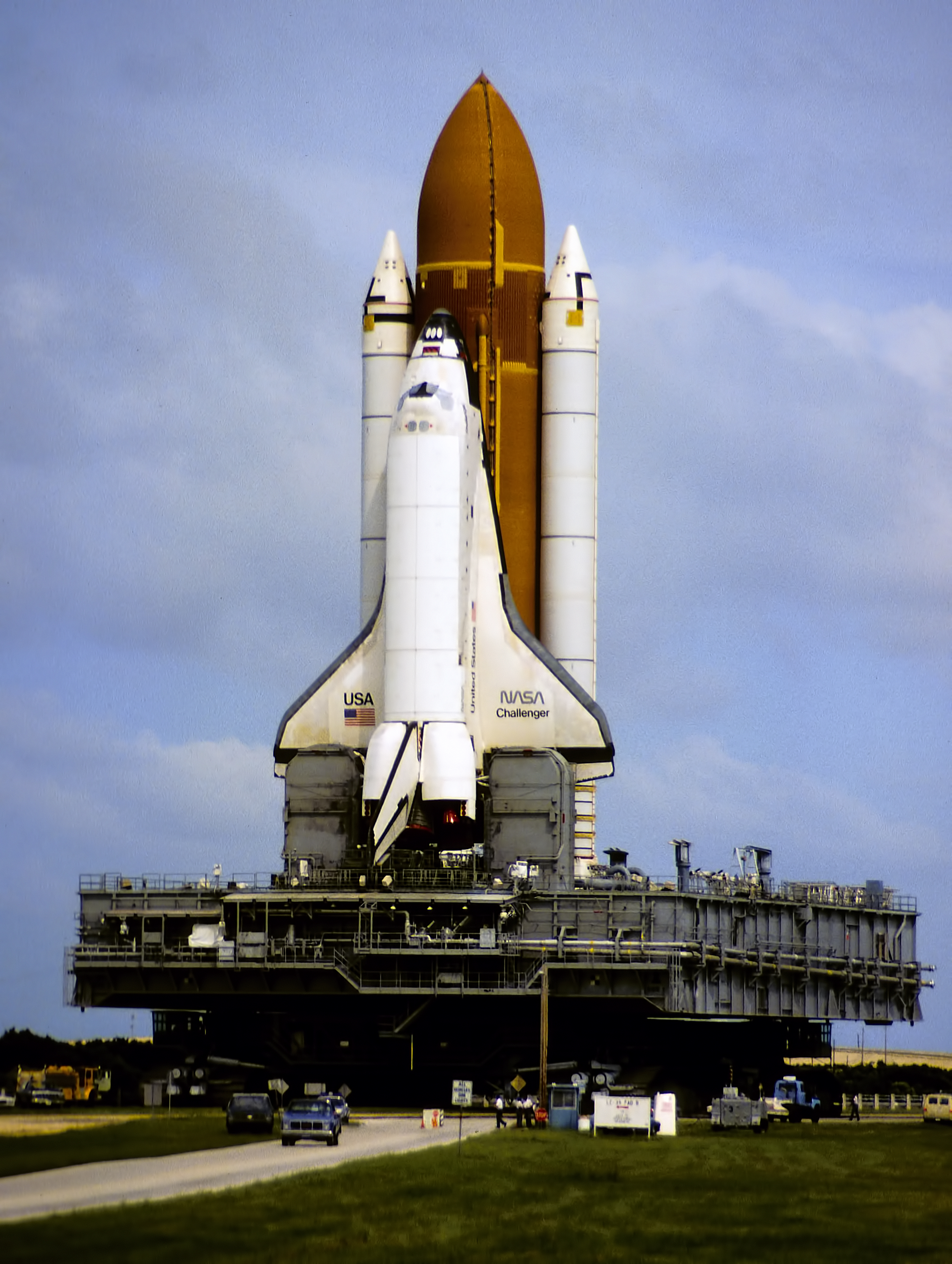|
Cape Canaveral Launch Complex 31
Launch Complex 31 (LC-31) is a former launch complex at Cape Canaveral Space Force Station, Florida. It was built in 1959 with Cape Canaveral Air Force Station Launch Complex 32, LC-32 for the U.S. Air Force to conduct test launches of the first LGM-30 Minuteman missiles. LC-31 was built next to SM-64 Navaho, Navaho complex LC-9, requiring Cape Canaveral Air Force Station Launch Complex 10, LC-10 to be demolished. These complexes were the first to feature dual launch pads, one of which was subterranean. LC-31 consisted of a blockhouse, static launch pad (31A) and missile silo (31B). The bee-hive-shaped blockhouse is 210 yards from the static pad and 330 yards from the silo. The Air Force launched four Minuteman missiles from 31A; and 35 from the silo, 31B, between February 1, 1960 and September 23, 1969. Pad 31A was used later by the U.S. Army to test launch twelve Pershing 1a missiles. The service tower has since been removed; the silo remains, and contains recovered debris ... [...More Info...] [...Related Items...] OR: [Wikipedia] [Google] [Baidu] |
Cape Canaveral Space Force Station
Cape Canaveral Space Force Station (CCSFS) is an installation of the United States Space Force's Space Launch Delta 45, located on Cape Canaveral in Brevard County, Florida. Headquartered at the nearby Patrick Space Force Base, the station is the primary launch site for the Space Force's Eastern RangeCAST 1999, p. 1-12. with three launch pads currently active (Space Launch Complexes 37B, 40, and 41). The facility is south-southeast of NASA's Kennedy Space Center on adjacent Merritt Island, with the two linked by bridges and causeways. The Cape Canaveral Space Force Station Skid Strip provides a runway close to the launch complexes for military airlift aircraft delivering heavy and outsized payloads to the Cape. A number of American space exploration pioneers were launched from CCSFS, including the first U.S. Earth satellite (1958), first U.S. astronaut (1961), first U.S. astronaut in orbit (1962), first two-man U.S. spacecraft (1965), first U.S. unmanned lunar land ... [...More Info...] [...Related Items...] OR: [Wikipedia] [Google] [Baidu] |
US Space Force
The United States Space Force (USSF) is the space service branch of the U.S. Armed Forces, one of the eight U.S. uniformed services, and the world's only independent space force. Along with its sister branch, the U.S. Air Force, the Space Force is part of the Department of the Air Force, one of the three civilian-led military departments within the Department of Defense. The Space Force, through the Department of the Air Force, is overseen by the secretary of the Air Force, a civilian political appointee who reports to the secretary of defense, and is appointed by the president with Senate confirmation. The military head of the Space Force is the chief of space operations who is typically the most senior Space Force officer. The chief of space operations exercises supervision over the Space Force's units and serves as one of the Joint Chiefs of Staff. The Space Force is the smallest U.S. armed service, consisting of 8,400 military personnel. The Space Force operates 77 sp ... [...More Info...] [...Related Items...] OR: [Wikipedia] [Google] [Baidu] |
LGM-30 Minuteman
The LGM-30 Minuteman is an American land-based intercontinental ballistic missile (ICBM) in service with the Air Force Global Strike Command. , the LGM-30G Minuteman III version is the only land-based ICBM in service in the United States and represents the land leg of the U.S. nuclear triad, along with the Trident submarine-launched ballistic missile (SLBM) and nuclear weapons carried by long-range strategic bombers. Development of the Minuteman began in the mid-1950s when basic research indicated that a solid-fuel rocket motor could stand ready to launch for long periods of time, in contrast to liquid-fueled rockets that required fueling before launch and so might be destroyed in a surprise attack. The missile was named for the colonial minutemen of the American Revolutionary War, who could be ready to fight on short notice. The Minuteman entered service in 1962 as a deterrence weapon that could hit Soviet cities with a second strike and countervalue counterattack if the U.S ... [...More Info...] [...Related Items...] OR: [Wikipedia] [Google] [Baidu] |
Pershing 1a
The MGM-31A Pershing was the missile used in the Pershing 1 and Pershing 1a field artillery missile systems. It was a solid-fueled two-stage theater ballistic missile designed and built by Martin Marietta to replace the PGM-11 Redstone missile as the primary nuclear-capable theater-level weapon of the United States Army and replaced the MGM-1 Matador cruise missiles operated by the German Air Force. Pershing later replaced the European-based MGM-13 Mace cruise missiles deployed by the United States Air Force and the German Air Force. Development began in 1958, with the first test missile fired in 1960, the Pershing 1 system deployed in 1963 and the improved Pershing 1a deployed in 1969. The U.S. Army replaced the Pershing 1a with the Pershing II Weapon System in 1983 while the German Air Force retained Pershing 1a until all Pershings were eliminated in 1991. The U.S. Army Missile Command (MICOM) managed the development and improvements while the Field Artillery Branch deployed t ... [...More Info...] [...Related Items...] OR: [Wikipedia] [Google] [Baidu] |
Florida
Florida is a state located in the Southeastern region of the United States. Florida is bordered to the west by the Gulf of Mexico, to the northwest by Alabama, to the north by Georgia, to the east by the Bahamas and Atlantic Ocean, and to the south by the Straits of Florida and Cuba; it is the only state that borders both the Gulf of Mexico and the Atlantic Ocean. Spanning , Florida ranks 22nd in area among the 50 states, and with a population of over 21 million, it is the third-most populous. The state capital is Tallahassee, and the most populous city is Jacksonville. The Miami metropolitan area, with a population of almost 6.2 million, is the most populous urban area in Florida and the ninth-most populous in the United States; other urban conurbations with over one million people are Tampa Bay, Orlando, and Jacksonville. Various Native American groups have inhabited Florida for at least 14,000 years. In 1513, Spanish explorer Juan Ponce de León became the first k ... [...More Info...] [...Related Items...] OR: [Wikipedia] [Google] [Baidu] |
Cape Canaveral Air Force Station Launch Complex 32
Launch Complex 32 (LC-32) is a former launch complex at Cape Canaveral Space Force Station, Florida. It was built in 1959 with LC-31 for the U.S. Air Force to conduct test launches of the first LGM-30 Minuteman The LGM-30 Minuteman is an American land-based intercontinental ballistic missile (ICBM) in service with the Air Force Global Strike Command. , the LGM-30G Minuteman III version is the only land-based ICBM in service in the United States and r ... missiles. These complexes were the first to feature dual launch pads, one of which was subterranean. LC 32 consisted of a blockhouse, static launch pad (32A) and missile silo (32B). The bee-hive-shaped blockhouse is 210 yards from the static pad and 330 yards from the silo. The Air Force launched 53 ballistic missiles from the silo of LC-32B between August 30, 1961 and December 14, 1970. There are no records of any launches from the LC-32A launch pad. The service tower has since been removed and silo filled in, although re ... [...More Info...] [...Related Items...] OR: [Wikipedia] [Google] [Baidu] |
SM-64 Navaho
The North American SM-64 Navaho was a supersonic intercontinental cruise missile project built by North American Aviation (NAA). The final design was capable of delivering a nuclear weapon to the USSR from bases within the US, while cruising at at altitude. The missile is named after the Navajo Nation. The original 1946 project called for a relatively short-range system, a boost-glide weapon based on a winged V-2 rocket design. Over time the requirements were repeatedly extended, both due to the US Air Force's desire for longer ranged systems, as well as competition from similar weapons that successfully filled the shorter-range niche. This led to a new design based on a ramjet powered cruise missile, which also developed into a series of ever-larger versions, along with the booster rockets to launch them up to speed. Through this period the US Air Force was developing the SM-65 Atlas, based on rocket technology developed for Navaho. Atlas filled the same performance goals but ... [...More Info...] [...Related Items...] OR: [Wikipedia] [Google] [Baidu] |
LC-9
Launch Complex 9 (LC-9) at Cape Canaveral Space Force Station is a launch pad on Cape Canaveral in Florida. It is north of Cape Canaveral Air Force Station Launch Complex 17, Launch Complex 17. It is a small concrete structure consisting of an elevated launch pedestal and flame trench, centered on a small oval-shaped concrete pad. It was used for ten test launches of SM-64 Navaho missiles. The Navaho was a supersonic nuclear weapon, nuclear-armed cruise missile. In addition to LC-9, Navaho tests were also conducted at Cape Canaveral Air Force Station Launch Complex 10, LC-10 and Edwards Air Force Base. The Navaho was cancelled after poor performance in testing, eight of the eleven test launches of the final prototype failed. All of the failed launches were conducted from LC-9. , the concrete launch structure is still standing, but is not maintained; and the launch support equipment has been removed. The site is not accessible to the general public. See also *Cape Canaveral Refe ... [...More Info...] [...Related Items...] OR: [Wikipedia] [Google] [Baidu] |
Cape Canaveral Air Force Station Launch Complex 10
Launch Complex 10 (LC-10) at Cape Canaveral Space Force Station, Florida was a launch pad used by SM-64 Navaho missiles, and later Jason sounding rockets and the Alpha Draco The Alpha Draco missile, also known as Weapons System 199D (WS-199D), was an experimental ballistic missile developed by McDonnell Aircraft in the late 1950s to investigate the aerodynamic physics of the boost-glide reentry trajectory. Three test ... research missile. It was located north of Launch Complex 17, where Launch Complexes 31 and 32 are now located. A single Navaho missile was test-launched from LC-10, on 12 August 1957, and was one of only three Navahos to complete a successful flight. Following the cancellation of the Navaho, LC-10 was reused for launches of Jason and Draco sounding rockets during 1958 and 1959. The last launch to use the site was of a Draco on 27 April 1959. LC-10 was subsequently demolished during the construction of Launch Complexes 31 and 32, which were built on the same ... [...More Info...] [...Related Items...] OR: [Wikipedia] [Google] [Baidu] |
Blockhouse
A blockhouse is a small fortification, usually consisting of one or more rooms with loopholes, allowing its defenders to fire in various directions. It is usually an isolated fort in the form of a single building, serving as a defensive strong point against any enemy that does not possess siege equipment or, in modern times, artillery, air force and cruise missiles. A fortification intended to resist these weapons is more likely to qualify as a fortress or a redoubt, or in modern times, be an underground bunker. However, a blockhouse may also refer to a room within a larger fortification, usually a battery or redoubt. Etymology The term '' blockhouse'' is of uncertain origin, perhaps related to Middle Dutch '' blokhus'' and 18th-century French '' blocus'' (blockade). In ancient Greece Blockhouses existed in ancient Greece, for example the one near Mycenae. Early blockhouses in England Early blockhouses were designed solely to protect a particular area by the use of ... [...More Info...] [...Related Items...] OR: [Wikipedia] [Google] [Baidu] |
Space Shuttle Challenger
Space Shuttle ''Challenger'' (OV-099) was a Space Shuttle orbiter manufactured by Rockwell International and operated by NASA. Named after the commanding ship of a nineteenth-century scientific expedition that traveled the world, ''Challenger'' was the second Space Shuttle orbiter to fly into space after '' Columbia'', and launched on its maiden flight in April 1983. It was destroyed in January 1986 soon after launch in an accident that killed all seven crewmembers aboard. Initially manufactured as a test article not intended for spaceflight, it was utilized for ground testing of the Space Shuttle orbiter's structural design. However, after NASA found that their original plan to upgrade ''Enterprise'' for spaceflight would be more expensive than upgrading ''Challenger'', the orbiter was pressed into operational service in the Space Shuttle program. Lessons learned from the first orbital flights of ''Columbia'' led to ''Challenger''s design possessing fewer thermal protectio ... [...More Info...] [...Related Items...] OR: [Wikipedia] [Google] [Baidu] |






